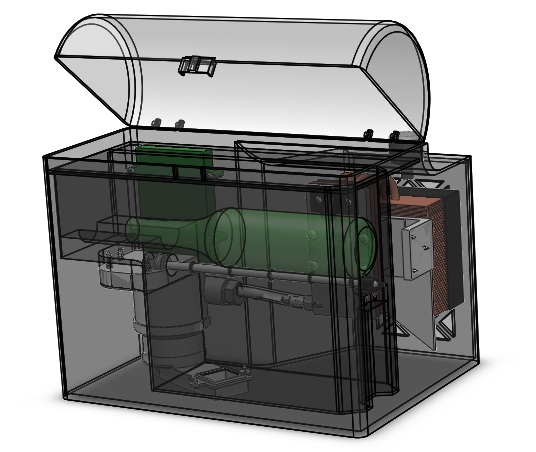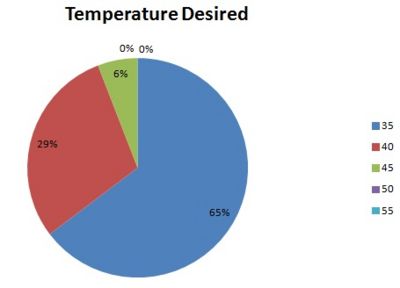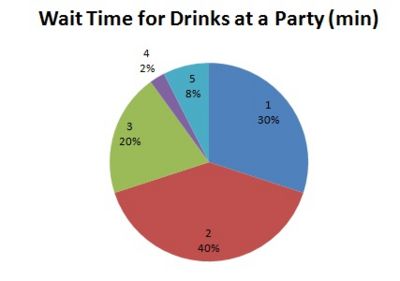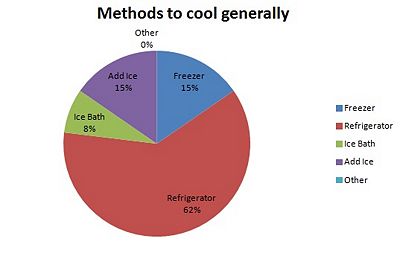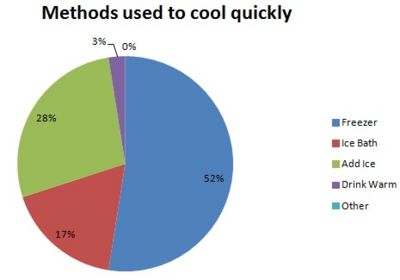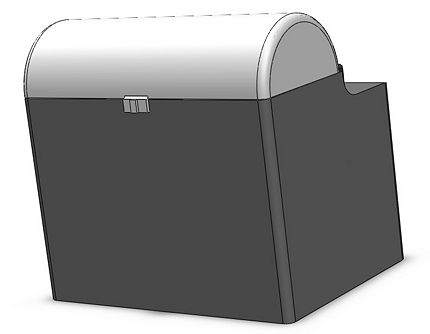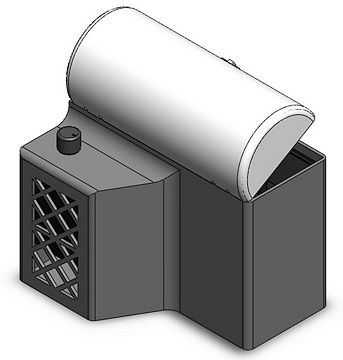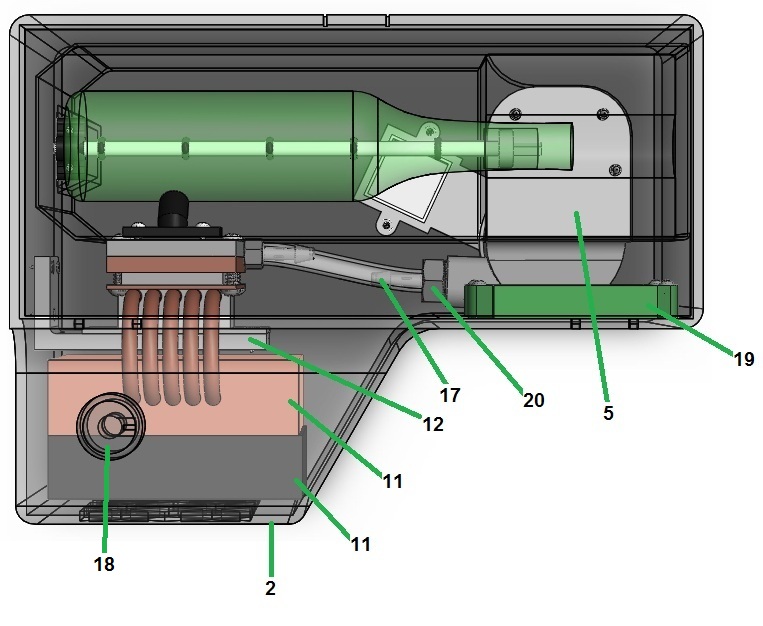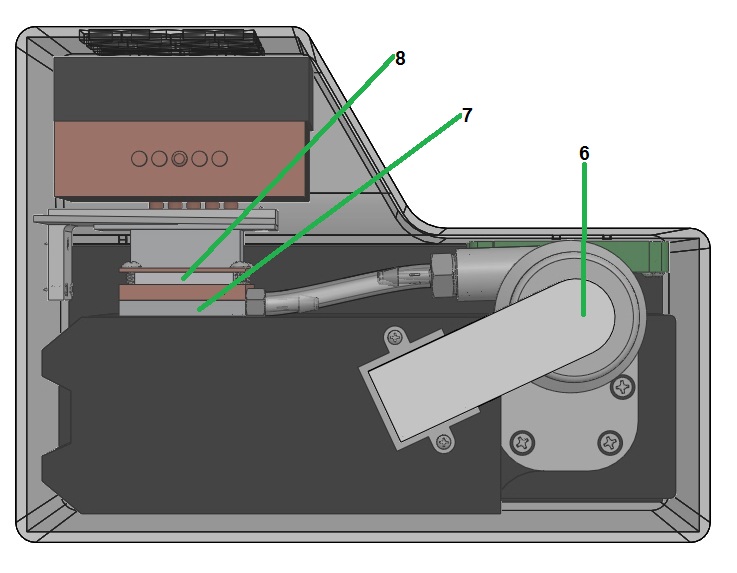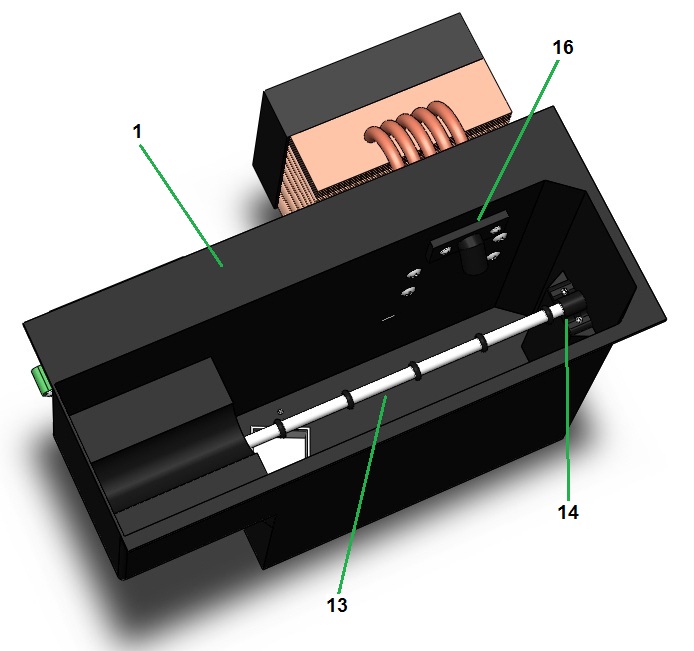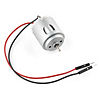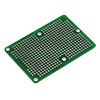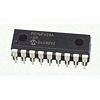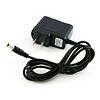Drink Cooler Innovation
From DDL Wiki
Contents |
Executive Summary
Market Analysis
Market Research
Survey 1
To understand if there was a market for our product and in which direction to take the improvements we created a survey. The purpose of the survey was essentially to determine how cold people like their drinks, how they normally cool them, how they cool them in an emergency and at a social event how long they are willing to wait for their drinks to be cold. We distributed the survey at a social gathering and online and got over 45 useful responses.
We found that people like their drinks really cold and as seen in the graph above over 94% of the sample would like their drink to be under 40 Fahrenheit. We also found using a separate question that only 10% would wait more than 3 minutes for their drink to be cooled and only 30% would wait more than 2 minutes as seen below in the graph. This definitely showed us there is a market for ice cold drinks that need to be cooled quickly.
To see what we are dealing with currently we asked people how they cool their drinks given they have time and do not need to do it in a rush. We found that interestingly a majority of 62% would use a refrigerator however given an emergency where drinks need to be cooled quickly we found that over 50% now prefer a freezer. Hence clearly there is a need for a product that has to beat a freezer at quick and efficient cooling.
Having seen in the survey that there is a demand for cooling drinks quickly, we decided to study the difficulties people faced with current quick cooling methods.
Anthropological Observation
In this study, one of the group members turned up for a small party with a case of 24 room-temperature canned drinks. Since the guests at the party wanted to have some of the canned drinks, the host brought out a small bucket of water and emptied two trays of ice into it. He left some of the cans to cool inside the bucket. After a handful of drinks were cooled using this method, the ice had completely melted and the water come up to room temperature. Once the ice had melted, the host tried looking for ice at his neighbors’ place but did not manage to get hold of any. The unopened drinks that were not cooled were just tucked into the freezer. This study, allowed us to observe the use of the ice bath. The use of the ice bath was messy and the cooling process took a long time. Above all, it was inconvenient as it required a large amount of ice that users may usually not have. We thus realized that there would be strong demand for ice-less cooling techniques and decided to take a step further to see how our competitor’s product fared with respect to the more crude techniques of cooling drinks.
User Study for the Competitor’s Product
We conducted two user studies for our competitor’s product, the Blitz Chiller. The first study, the host was having an impromptu gathering on a weekend night with 5-6 guests. Unfortunately, the host did not have space in the refrigerator to keep drinks cool at all time and only had access to room temperature beer. They thus used the Blitz Chiller to chill the drinks. The second scenario observed was slightly different. A couple users had just returned from the store having bought beverages on a weekend evening. They wanted to drink a beer each, but it was all at room temperature. They used the drink cooler to cool two beverages for themselves. In both cases, the users took about five minutes to figure out how to operate the machine. Once, they figured out how to operate the machine, they started cooling their drinks. However, there were a few problems we observed during the usage of the Blitz Chiller. The most important problem we noticed was that the Blitz Chiller cooled about 4 canned drinks with two trays of ice to a consumable temperature. The ice bath study showed us the ice bath too could cool about 4 drinks with two trays of ice to a consumable temperature. The Blitz Chiller thus had an ice consumption seemed similar to the ice bath. Thus soon after the users used up the two trays of ice available in their fridge, they had to go searching for ice. In addition to the need for a large amount of ice, the Blitz Chiller had a few other drawbacks. First, it was a very loud machine. People were forced to speak louder than usual and the television volume was had to be turned up. This is obviously not an ideal scenario. Second, the lid did not function well. On some occasions it would pop open while the device was running. Other times, it would take several tries to open. Third, the water proofing on the lid was weak as water dripped out constantly. Finally, changing the water was a hassle. This task is hard to do with just one person. The lid does not open fully, forcing the user to tilt the device at awkward angles to get the ice out. Pouring in new water is also a hassle for the same reason.
User Interviews for the Competitor’s Product
We followed up the user studies with user interviews. Users were interviewed to get a better understanding of their opinions on the product. The general consensus was that requirement of ice was a significant constraint to the usability of the product. Loading and changing ice into the device was time-consuming and clumsy. Also, a larger cooling capacity (multiple drinks at once) was desired. With the current one drink limit, this cooling method was not much more efficient than the alternative of an ice-water bath, which could be used to cool multiple drinks at once. The one drink limit also meant that somebody always has to constantly be operating the device in order to cool enough drinks. The noise generated by the device was also a problem. It made holding conversations in the same room as the device uncomfortable. In summary, the users felt that the current product had limited use. The requirement of ice and low capacity made it marginally better at cooling beverages than an ice bath yet more of a hassle. The noise didn't help. This made the device only practical for cooling 1-2 drinks at a time. One user suggested developing a product that doesn't need ice and marketing the product for a situation where users would not have access to a refrigerator.
From our survey, anthropological study, user studies and user interviews, it seems clear that there is demand for a quick cooling mechanism that does not use ice. We were thus convinced that our product would have a strong market. We thus proceeded to develop our product, an ice-free, convenient way to cool drinks. After developing the product, we carried out another survey to gauge how much people value our product.
Survey 2
A second study was conducted once the prototype was completed to assess how much the consumers valued our product. The survey was completed by 60 individuals. The results are discussed below.
Our survey showed that over three-quarters of people have unexpected guests more often than once a month. In addition, when they do have guests, the have about 2-3 guests and would ideally like to have 3-6 cooled drinks ready to serve. However, they only have about 1-2 drinks cooled and ready to serve on a regular basis. This once again, reiterated the need for a product that could cool drinks rapidly.
One of the concerns with our prototype was that the drinks were not fully cooled to ice cold. So we sought to find the drink temperature that was considered to be "cold enough." Based on our survey this came out to be 40 degrees Fahrenheit for both beer and sodas. This temperature is a realistic target for our final product.
Next, we wanted to compare the practicality and usefulness of our product to that of the original competitor product. Our survey showed that the need for ice made the competitor product not practical for regular use. The survey respondents also said that if the ice requirement was eliminated, the product would be 2-3 times as useful.
On average, survey respondents were usually willing to pay $26-50 to buy our product. In addition, about 22% of users were willing to pay $51-100. This is a more realistic price range for our product and based on our survey there are people who would be willing to pay this amount.
Finally, to get an idea of the economic standing of our respondents, we asked them what their annual household income was. The data collected showed that most of our respondents were from the upper economic strata of society.
Target Market
Our product provides some significant improvements over the Blitz Cooler- the most significant being the elimination of ice. Additional components have been added to our product to achieve these improvements. Our product is thus bound to be more expensive than the $40 currently charged for a unit of the Blitz Cooler. I believe this price tag, requires us to target households with sufficient disposable income for this luxury product. We thus suggest targeting the households in upper 25% of the economic spectrum in the United States (disposable income > $80000/ annum).
Product Development Economics
Data on the sales of our competitor’s product was unavailable. In addition, similar innovative cooling mechanisms by smaller companies did not have sales figures either. We thus looked at the production level of the most commonly available cooling device, the refrigerator. About 8 million refrigerators are sold every year in the USA (Reference). Assuming refrigerators are uniformly distributed among the various economic classes, about 2 million refrigerators are being used by the top 25% in the economic spectrum. We can thus look at these 2 million households, who feel the need for a cooling device, as our potential market. Assuming we can reach between 1-10% of this market, we are looking at a total production volume of between 2000 and 200000 over the lifetime of our product.
Using this estimate on the production volume of our product, we developed a ballpark estimate for the cost of manufacturing our product by focusing on the most costly components involved in making our product.
| Part | Cost ($/per part) |
| Motor | 15 |
| Housing | 6.15 |
| Peltier | 10.95 |
| Heat Sink Fan | 33.5 |
| Aluminium+Cooper Block | 18 |
| Total Cost (Estimate) | 83.6 |
Using a mark-up of between 10-20% gives us a price range of $92-$100. Though this results in our product being more than twice as expensive as the Blitz Cooler, our survey results seem to suggest that there may still be a strong demand for our product.
The survey results showed that most respondents felt that our product would be about 2-3 times as valuable as the Blitz Cooler and about 22% responded that they would pay between $51-$100 for our product. Since, the survey was conducted largely among members of households in the top 25% percent of the economic spectrum, it seems that a sizable section of our target audience not only values the our product more than the Blitz Cooler but are also willing to pay more for our product than the Blitz Cooler.
Thus, though our product may be about twice as expensive as our competitor's product, we believe that there may still be a strong market for the product. We thus recommend the use of consultants to carry out a more thorough market analysis and product development economics study to understand the profitability of producing our product.
Design Documentation
Final Product CAD
Bill of Materials
House of Quality
Design Analysis
Design for Manufacturing and Assembly
Many of the strengths and weaknesses regarding design for ease of manufacturing and assembly from the competitor's drink cooler were carried over into the proposed product. Our product incorporates many of the same parts used in the competitor product. The major difference is that our product has the additional water cooling block with the Peltier cells added in series with the competitor product's water circuit.
Manufacturing
One of the main strengths of the proposed product is that both the water pump and drink rotator operate on just one motor. A bevel gear was used such that both devices could be operated from the same motor. This was critical to the design as it allowed the entire product to be both compact and cheap. This feature was carried over from the competitor product.
As many parts are possible were standardized. The only parts that are custom made are the external housing, rotator bar, motor housing, water plumbing, and cooling block. The first four of these are all injection molded. Considering this device will be mass produced by the company, injection molding is probably the most efficient means of production. The cooling block had only one part that required machining (aluminum block with channels). This part can easily be mass produced with a CNC machine. The two copper blocks simply needed to be drilled and tapped for screws. The standardized components used in the design were the screws, springs, motor, pulley, circuit board, O-rings, Peltier cells, heat sink, and fan. This took advantage of the scale of production. In addition, it was designed such that only one drill size was needed and all the holes could be drilled from as few positions as possible.
The major weakness with the product is the small tolerances throughout the system. This is necessary because the system needs to be water tight. This was also a concern in the competitor product. However, the goal of our project was to incorporate a Peltier cooling system and not to find a way to improve the tight tolerances. Thus this issue was not addressed in our work.
Assembly
The design was made in a way to ease assembly. A majority of the pieces fit into the external housing in order from bottom to top. In addition, most of the parts are press fit. These parts were designed to be round with guides. This allows for easy insertion that will snap into the correct position. These press fits also reduced the requirement for screws, which are tedious and would complicate the assembly. In addition, the water plumbing was joined with a flexible rubber connector. This improved the tolerances of the tubing. The custom parts were injection molded using two materials. One of for the external housing and one for the interior parts. Finally, the cooling block, Peltier cell, heat sink, and fan assemble was designed such that all parts could be easily assembled and fastened in a bottom-to-top order. The additional wiring necessary to power the Peltier cells was located to allow easy access to the both the motor and cooling assemble, which are the two parts that need electricity.
Comparison to Competitor Product
As mentioned earlier since our product uses many of the same parts as the competitor product, many of the design for manufacturing and assemble were the same. The main new issues were those that were brought up due to the cooling assemble. These parts were all designed such that they were easily mass manufactured and assembled. Additional wiring was needed to power the Peltier cells and the fan. All this wiring was positioned to allow easy assembly.
Mechanical Analysis
Prototype Documentation
The prototype demonstrated the ability to chill water for cooling drinks without the need for a disposable cooling catalyst. The prototype used the same housing, electronics, mechatronics and fluid dynamic system as the original competitor product, but has been modified to cool water using Peltier cells rather than melting ice. To accommodate bend radii and the size of the heat sink, a large portion was removed from the back of the product’s shell. The piping of the competitor product was adapted to fit the smaller piping of the new design, and between the outlet of the motor housing and the water spout the Peltier cooling assembly was inserted. Water is passed through channels milled in a piece of aluminum. Closing off the channels on top is a copper block, followed by a pair of Peltier cells in series, followed by another copper block. This assembly uses the thermoelectric effect to chill the metal blocks and channels, in turn chilling water as it flows through the channels. Initial testing determined that the volume of water to be chilled was too great for the Peltiers the group used to effectively chill it, so pieces that we cut off from the shell were retrofitted to decrease the size of the reservoir of the existing product. This resulted in a drop in water pressure across the system, but the bulk temperature of the water could decrease much more quickly.
Waterproof putty was used to seal pipe interfaces and the cooling block itself. After several unsuccessful attempts to seal the piping, the putty proved to be by far the most effective. A special power supply is required to operate the Peltier Cells at higher capacity than the standard wall socket would allow. A third Peltier is connected to the others in series and dunked in a separate water bath to act as a resistor for the cooling cells. Peltiers operate optimally at both a high current and potential, making the circuitry required to run them at peak power require components not normally available commercially. A computer heat sink and mounted fan is thermally connected to the hot side of Peltiers with thermal paste. When run for a six minute cycle, the bulk temperature of the water is decreased by 10 °F. A drink placed on the rotating arm and sprayed with water for a similar timescale experiences comparable cooling effects.
Though this prototype demonstrates all the key components and features of the final product design, it is very different from a product that might be produced. In the final design, all of the exterior and interior housing will need to be custom designed and manufactured. Similarly, the motor housing assembly, which holds the gearing, belts, rotating arm and turbine will all need to be fabricated from scratch. The arrangement of components is space optimized, and a much smaller heat sink and fan is utilized, reducing the overall footprint of the design to be similar to competitive levels. The cooling assembly itself has been repositioned and shortened significantly. Since the final product does not operate under some of the space constraints of the competitor product, the cooling assembly can be positioned against the reservoir block, and its outlet connects directly to the water spout. Metal parts in the final design can be redesigned for stamping rather than machining, allowing multiple units to be made at the same time, and with lower materials costs, lead times, and wastes. The rest of the components are made out of a combination of PVC and ABS plastics, which are injection molded to produce a consistent and easily reproducible product. The capital required for these operations is considerable, but for high volume production is very practical.
Design Process
Overall, the team worked very effectively in accomplishing tasks. The team had regular weekly meetings where the entire team would be updated on the status of the project and plan goals for the future. All major coordinating and scheduling was done at the meetings. Minor issues were dealt with via email. The team roles were quite fluid and people helped out an all aspects of the project. The main three divisions were the electrical circuit, water circuit, and CAD model. Arvin, Ojas, and Dhruv worked on the electrical circuit. Pat, Charlie, Dhruv, and Ojas worked on the water circuit. Finally, Arvin and Charlie worked on the CAD model. All members worked together on compiling the final report.
Our prototype is not ready for production. The purpose of our prototype is to demonstrate that we are capable of developing a Peltier cooling system that is capable of cooling the water coolant. Our current setup will reach a steady state temperature of ___. However, this temperature is limited by the poor quality of the electrical circuit used. The members of this team have neither significant expertise or experience with electronics. Currently, the two Peltier cells operate at 4.5 amps on average while the suggested maximum is nine amps. We recommend that research be conducted on how additional current be supplied to the Peltier cells. With the current system they are working at only 50% of their maximum. According to some Carnegie Mellon electrical engineers, such a circuit is possible with the use of operational amplifiers but is beyond the abilities of this design team.
